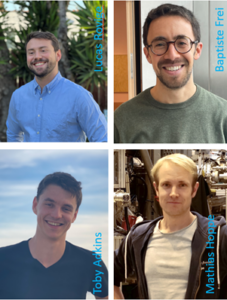This is the home page of the Plasma Physics Division of the European Physical Society.
News
Proceedings of the EPS Conference on Plasma Physics
Contributed papers presented at every EPS Conference on Plasma Physics back to the first one in Munich in 1966 can now be accessed through a single web page.
Contributed papers presented at the 2023 conference in Bordeaux can be found here.
Calls for prize nominations
Calls for all of the 2024 prizes have now closed; calls for the 2025 prizes will appear here in due course.
2024 EPS Plasma Physics Division PhD Research Award
Congratulations to the winners!
- Dr Lucas Rovige (Institut Polytechnique de Paris, France) for his thesis “Optimization, stabilization and optical phase control of a high-repetition rate laser-wakefield accelerator“
- Dr Baptiste Frei (École Polytechnique Fédéral de Lausanne (EPFL), Switzerland) for his thesis “A Gyrokinetic Moment Model of the Plasma Boundary in Fusion Devices“
- Dr Toby Adkins (University of Oxford, UK) for his thesis “Electromagnetic instabilities and plasma turbulence driven by the electron-temperature gradient“
- Dr Mathias Hoppe (Chalmers University of Technology, Sweden) for his thesis “Runaway-electron model development and validation in tokamaks”
Long citations
- Dr Lucas Rovige (Institut Polytechnique de Paris, France) for his Thesis “Optimization, stabilization and optical phase control of a high-repetition rate laser-wakefield accelerator“
Through chirped-pulse amplification, a sub-picosecond laser pulse creates in its wake, inside a plasma at atmosphere pressure, a periodic concentration of electrons travelling at close to the velocity of light in vacuum. Laser peak irradiance higher than 10 to the power 18 watts per square cm gives access to 100 GV/m-level axial field and realises the dream of a next generation of accelerators being compactified by a factor of 1000. The PhD work was in one of these few labs which have maintained a constant effort on the concept and the associated optics engineering. It used ultrashort laser pulses, down to 1.3 optical cycles, to generate MeV electrons for irradiation of biological samples. Many outputs from this 3-year experimental and numerical project deserve the “outstanding” label: an impressive stability of million consecutive laser shots during hours, for the first time carrier-envelope phase effects influencing the electron beam pointing, and the first proof-of-principle experiment measuring the survival rate of cancerous cells irradiated with a 1 Gy/s dose rate. Underlying these results is solid work to optimize a helium gas jet through fluid simulations and the laser irradiance via self-focusing through kinetic modelling to achieve eventually a beam divergence as low as 3 mrad and electron energies up to 8 MeV.
High praise recommendations pinpoint a quickly-achieved autonomy, an impressive scientific maturity of the student and an outstanding contribution that opens new perspectives in the wakefield accelerator field. This work is already recognized by 7 highly-cited papers in peer reviewed journals, 5 as first author in high-rated journals such as PRX and by 2 invited presentations at international conferences. With teaching experience at physics department of its institution and a postdoctoral researcher position obtained immediately at the University of California on laboratory astrophysics, showing his ability to work in other research domains, this brilliant and creative student is a worthy recipient of the European Physical Society PhD award.
- Dr Baptiste Frei (École Polytechnique Fédérale de Lausanne (EPFL)) for his Thesis “A gyrokinetic moment model of the plasma boundary in fusion devices“
Baptise Frei’s PhD thesis has tackled the challenge of modelling meaningfully the plasma edge region of a magnetically confined plasma. The aim of his work was to determine a framework with the correct physics representation and reasonable computational costs, able to reproduce the plasma edge behaviour in a wide range of collisionality regimes. Baptiste “invented” a new approach to the modelling of the plasma edge region, where gyrokinetic (GK) approaches developed for the plasma core are not suitable, and nor is fluid modelling typically used for the modelling of the Scrape-Off Layer (SOL). This new modelling framework is called the “Gyro-Moment” (GM) approach. The derivation of this model from a self-consistent electromagnetic GK boundary model is based on a polynomial expansion of the distribution function. Baptiste’s supervisor highlights in his letter of support that the analytical abilities shown by Baptiste in the model development are outstanding.
Applying the GM approach to the description of plasma dynamics in a wide range of collisionalities led Baptiste to derive a linearisation of the GM hierarchy including the GK Coulomb collisional operator and obtain closed analytical expressions. He then developed from scratch a numerical code implementing the GM approach. This led to the study of collisional effects in key plasma edge regimes (ITG, TEM, GAMs, and zonal flow damping), and comparison of the results with other modelling based on simplified collision operators. His analysis showed that the GM approach can indeed describe the relevant physics, as well as capturing new effects related to the improved collision model. To conclude, the PhD work of Baptiste Frei is of outstanding quality, quantity, and novelty, providing a framework for the modelling and understanding of a crucial but not very well understood plasma region, the edge, that is key to fusion plasma performance.
- Dr Toby Adkins (University of Oxford) for his Thesis “Electromagnetic instabilities and plasma turbulence driven by the electron-temperature gradient“
An understanding of the heat-transport properties of a magnetically confined plasma is crucial for the design of future power plants. This thesis contributes two key findings concerning this understanding.
One topic concerns magnetized, electrostatic turbulence with wavelengths much shorter than the thermal ion gyroradius. Dr. Adkins concluded that an important parameter, the radial flux of energy induced by these turbulent fluctuations, scales with the size of the domain in the direction parallel (not perpendicular) to the equilibrium magnetic field. The thesis demonstrates, numerically and analytically, that in this short-wavelength limit, it is the weak inhomogeneity along the direction of the magnetic field that determines the turbulence-induced heat flux. This is clearly different from previous widely-used assumptions, and can be important for studies of instabilities limiting the performance of tokamak reactors. The second topic concerns electromagnetic instabilities driven by a gradient in the electron temperature. This subject is directly relevant for fusion physics and is well-known and often studied. Still, Dr. Adkins has identified and described the importance of the novel thermo-Alfvénic (TAI) instability. He found that this instability can be the dominant source of turbulence-induced thermal losses when the electron temperature gradient is steep. Dr. Adkins has investigated the relationship between this instability and others such as the longer wavelength kinetic ballooning mode. The differences between the TAI and the phenomenology of other instabilities can be traced to small differences in the governing equations.
A common idea is that the largest scales are the most important in determining the saturated amplitudes to which fluctuations and the related turbulent transport grow, regardless of the particular regime being considered (electrostatic, electromagnetic etc). This thesis shows a clear and deep insight into plasma physics, using a firm command of both analytical and numerical tools. Dr. Adkins is a worthy recipient of the European Physical Society PhD award.
- Dr Mathias Hoppe (Chalmers University of Technology, Sweden) for his Thesis “Runaway-electron model development and validation in tokamaks”
Modelling physical phenomena is often a difficult problem because various features appearing in experiments must be synthesized using a mathematical formulation which can be used also to predict new scenarios. The work described in the thesis by M Hoppe reflects this path; the implementation of two codes, SOFT (Synchrotron detecting Orbit Following Toolkit) and DREAM (Disruption Runaway Electron Analysis Model), which are useful for the interpretation of the dynamics of electron runaway generation and development in tokamaks. These codes have been made available to the scientific community for interpreting experimental data in various devices in Europe and the USA. The generation of runaway electrons is one of the origins of disruptions in tokamaks and can lead to uncontrolled loss of plasma confinement and damage to the fusion device. The thesis describes accurately the concrete set-up of measurements used for the characterization of the runaway electrons, involving detection of synchrotron radiation (in the visible to infrared spectral range) and bremsstrahlung (in the gamma-ray range). The important directional characteristic of the radiation emitted by relativistic electrons is that it is essentially directed along the velocity direction, and this results in a great simplification of the runaway electron signature. Synthetic diagnostics derived using simplifying assumptions (in particular in the SOFT code) have been developed, and reconstructed images of runaways generated in a tokamak plasma have been compared with images recorded in the Alcator C-Mod tokamak showing a certain level of accuracy in the comparison, and a strong dependence on the assumptions in the model, in particular the parametrisation of the electron distribution function. The work described in the thesis represents a realization of original conceptual tools that are expected to help the scientific community to improve its understanding of runaway electron physics, a very important topic for the development of fusion energy.
2024 EPS Plasma Physics Division Innovation Award
With great honour and admiration, we announce that Dr. Anthony B. Murphy from the Commonwealth Scientific and Industrial Research Organisation (CSIRO) in Australia is the recipient of the 2024 EPS Innovation Prize. This honour reflects his significant role in the advancement of thermal plasma processes, showcasing his reputation as the leading expert in the field.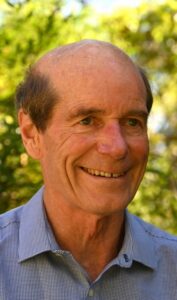
Dr. Murphy’s extensive research over more than three decades has led to groundbreaking developments, especially in predictive modeling for arc welding. His innovations have improved the precision and efficiency of metal fabrication processes, marking a significant step forward in the application of thermal plasmas. His current work in expanding these models for use in wire-arc additive manufacturing represents a promising frontier in manufacturing technologies.
His venture into green plasma technology, particularly his research on the plasma-catalytic production of ammonia, underscores his commitment to pioneering sustainable industrial processes. These efforts highlight Dr. Murphy’s ability to blend scientific inquiry with practical solutions for environmental sustainability.
Dr. Murphy’s collaborative endeavors and dedication to the field have not only contributed to the scientific community but have also spurred innovation across industry. His work embodies the spirit of the EPS Innovation Prize, celebrating not just scientific achievement but the practical application and societal impact of these innovations.
By awarding Dr. Murphy the EPS Innovation Prize, we not only honour his past contributions but also recognize his ongoing commitment to innovation. His work serves as an inspiration for future advancements, embodying the innovative spirit and pursuit of excellence that the prize aims to celebrate.
2024 Hannes Alfvén Prize
The 2024 EPS Hannes Alfvén Prize is jointly awarded to professor Tünde Fülöp (Chalmers University of Technology, Sweden) and professor Per Helander (Max Planck Institute for Plasma Physics, Greifswald, Germany) for outstanding contributions to theoretical plasma physics, yielding groundbreaking results that significantly impact the understanding and optimization of magnetically confined fusion plasmas.
Professors Tünde Fülöp and Per Helander have significantly advanced plasma theory through a number of fundamental contributions. Their research spans many topics including runaway electrons, kinetic instabilities and transport processes in magnetized plasmas. By pinpointing key physical mechanisms, they have catalyzed innovative developments in experimental devices for nuclear fusion applications.
 Professor Tünde Fülöp has been a leader in the field of disruptions and relativistic “runaway” electrons associated with these events. She has systematically explored the physics of runaway electrons in tokamaks and beyond, and conducted unprecedented modelling efforts applicable to both existing experiments and future devices. As part of this endeavour, Professor Fülöp has investigated various facets of the problem, including runaway-electron-driven electromagnetic instabilities, the impact of different collision types, radiation reaction effects, and the role of partially ionized impurities on runaway electron dynamics. Additionally, she has evaluated and optimized disruption mitigation strategies involving external magnetic perturbations and massive material injection. Furthermore, Professor Fülöp has played a crucial role in overseeing the development of several open-source, state-of-the-art runaway modelling tools and synthetic diagnostics. These tools have gained widespread use in the scientific community, reflecting her commitment to advancing collective knowledge in the field.
Professor Tünde Fülöp has been a leader in the field of disruptions and relativistic “runaway” electrons associated with these events. She has systematically explored the physics of runaway electrons in tokamaks and beyond, and conducted unprecedented modelling efforts applicable to both existing experiments and future devices. As part of this endeavour, Professor Fülöp has investigated various facets of the problem, including runaway-electron-driven electromagnetic instabilities, the impact of different collision types, radiation reaction effects, and the role of partially ionized impurities on runaway electron dynamics. Additionally, she has evaluated and optimized disruption mitigation strategies involving external magnetic perturbations and massive material injection. Furthermore, Professor Fülöp has played a crucial role in overseeing the development of several open-source, state-of-the-art runaway modelling tools and synthetic diagnostics. These tools have gained widespread use in the scientific community, reflecting her commitment to advancing collective knowledge in the field.
 Professor Per Helander has obtained seminal results in the theory of stellarator plasmas by systematically exploring the question of how the properties of magnetically confined plasmas depend on the geometry of the magnetic field. In most such plasmas, turbulent transport caused by micro-instabilities arising from plasma density and temperature gradients poses a significant challenge. Professor Helander foresaw a crucial development, the absence of the most important density-gradient-driven instability in certain types of magnetic fields. This prediction is believed to underpin the remarkable record plasma performance achieved in the Wendelstein 7-X stellarator. In addressing long-standing concerns about neoclassical impurity accumulation in stellarators, professor Helander demonstrated a possible route to avoiding it in collisionality regimes relevant to reactors. Furthermore, he identified important differences between stellarators and tokamaks concerning plasma rotation. On large scales, it is relatively slow in stellarators and governed by neoclassical processes even in the presence of turbulent transport, and on small scales zonal flows behave differently. These and other revelations have shaped the general understanding of stellarator plasmas and the burgeoning field of stellarator optimization.
Professor Per Helander has obtained seminal results in the theory of stellarator plasmas by systematically exploring the question of how the properties of magnetically confined plasmas depend on the geometry of the magnetic field. In most such plasmas, turbulent transport caused by micro-instabilities arising from plasma density and temperature gradients poses a significant challenge. Professor Helander foresaw a crucial development, the absence of the most important density-gradient-driven instability in certain types of magnetic fields. This prediction is believed to underpin the remarkable record plasma performance achieved in the Wendelstein 7-X stellarator. In addressing long-standing concerns about neoclassical impurity accumulation in stellarators, professor Helander demonstrated a possible route to avoiding it in collisionality regimes relevant to reactors. Furthermore, he identified important differences between stellarators and tokamaks concerning plasma rotation. On large scales, it is relatively slow in stellarators and governed by neoclassical processes even in the presence of turbulent transport, and on small scales zonal flows behave differently. These and other revelations have shaped the general understanding of stellarator plasmas and the burgeoning field of stellarator optimization.
50th EPS DPP Plasma Physics conference
The 50th EPS DPP Plasma Physics conference will be held from July 8th to July 12th 2024 in Salamanca, Spain.
More information on the conference website.
49th EPS DPP Plasma Physics conference
The 49th EPS DPP Plasma Physics conference was held from July 3rd to July 7th 2023 at the Bordeaux Congress Center (Bordeaux, France) with, among other very fascinating talks, the lectures given by the 2023 Hannes Alfvén and Innovation prize recipients.
 The conference also provided an opportunity to encourage the youngest researchers and highlight their ongoing studies through two sets of awards:
The conference also provided an opportunity to encourage the youngest researchers and highlight their ongoing studies through two sets of awards:
The 2023 PPCF / EPS / IUPAP Student Poster Prizes were awarded to:
- Sophie Gorno (EPFL, Switzerland) for her poster “Experiments and modelling to characterize the effect of connection length on power exhaust in TCV”,
special mentions to Paul Heinrich (IPP-Garching, Germany) for “Analysis of shattered pellet injection in ASDEX Upgrade”, Lina Velarde (University of Seville, Spain) for “Effect of Edge Localized Modes and magnetic perturbations on fast ion confinement in MAST-U”; Paul Mulholland (TU Eindhoven, The Netherlands) for “Enhanced transport at high plasma beta due to subthreshold kinetic ballooning modes in Wendelstein 7-X geometry” and Alessandro Balestri (EPFL, Switzerland) for “Role of aspect ration in confinement enhancement in negative triangularity plasmas” - Radka Štefaníková (HZDR Dresden, Germany) for her poster “Spatially resolved X-ray emission lines as a signature of electron dynamics in short-pulse solid-density laser-plasma interaction”,
- Michael Nastac (Oxford University, UK) for his poster “Irreversible stochastic heating via phase-space entropy cascade in nearly collisionless plasma turbulence”,
- Swarnima Singh (Institute for Plasma Research, India) for her poster “Experimental observation of a triple point for a complex (dusty) plasma”.
For the 2023 Kyushu University Itoh project Prize, three highly recommended presentations were awarded, since they were too competitive to select a winner. The three selected presentations were:
- Mario Raeth for “Excitation of high frequency waves in 6D kinetic Vlasov ITG simulation”,
- Jean Cazobonne for “Experimental and numerical evidence of electron turbulent transport enhancement by electron-cyclotron waves in tokamaks”,
- Oliver Panico for “Transport and zonal flows dynamics in flux-driven interchange and drift waves turbulence”.
2023 EPS-PPD PhD Innovation Prize
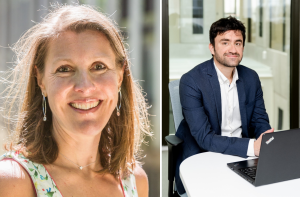 The 2023 Innovation Prize of the EPS Plasma Division is awarded to Prof. Dr. Annemie Bogaerts (head of the PLASMANT research group, University of Antwerp, Belgium) and Dr. Georgi Trenchev (CTO of the climate tech start-up D-CRBN, Belgium) for their efforts that bring plasma-based CO2 conversion from the lab to industry.
The 2023 Innovation Prize of the EPS Plasma Division is awarded to Prof. Dr. Annemie Bogaerts (head of the PLASMANT research group, University of Antwerp, Belgium) and Dr. Georgi Trenchev (CTO of the climate tech start-up D-CRBN, Belgium) for their efforts that bring plasma-based CO2 conversion from the lab to industry.
2023 EPS-PPD PhD Research Awards
The 2023 PhD Research Awards of the EPS Plasma Division are awarded to:
- Dr Luis Gil (Instituto Superior Tecnico, Universidade de Lisboa, Portugal) for his thesis on “Stationary ELM-free H-mode in ASDEX Upgrade”,
- Dr Maurizio Giacomin (Swiss Plasma Center, EPLF, Lausanne, Switzerland) for his thesis on “Turbulent transport regimes in the tokamak boundary”,
- Dr Livio Verra (Technical University Munich, Germany) for his thesis on “Electron Bunch Seeding of the Self-Modulation Instability in Plasma”, and
- Dr David Hosking (University of Oxford, UK) for his thesis on “The decay of MHD turbulence and the primordial origin of magnetic fields in cosmic voids”.
The 2022 Lev D. Landau and Lyman Spitzer Jr. Award for Outstanding Contributions to Plasma Physics, jointly sponsored by the Plasma Physics Divisions of the American Physical Society and the European Physical Society, is going to:
– Christopher Chen (Queen Mary University London, UK),
– Gregory Howes (University of Iowa, USA), and
– Kristopher Klein (University of Arizona, USA)
for “the theoretical development of the field-particle correlation technique and its application to spacecraft measurements directly showing that electron Landau damping plays a role in the dissipation of space plasma turbulence.”
The 2022 Selection Committee was composed of William Heidbrink (Chair), Vladimir Tikhonchuk (Vice Chair), Andrea Ciardi, Tammy Ma, Kristel Cromb and Troy Carter.
More information on the recipients on the APS website.
More information on the prize here.
On 1st July 2022, Richard Dendy stepped down as Chair of the EPS Plasma Physics Division at the closing session of the 48th Annual European Conference on Plasma Physics, after leading the division for exactly six years. His successor as Chair is Kristel Crombé, who has been Hon. Sec. of the EPS-PPD Board since 2016.
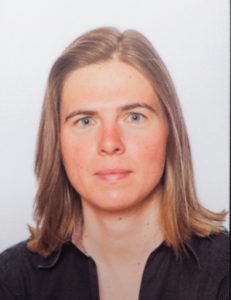
The EPS condemns the continuing attacks by the Russian Federation against Ukraine.
Read the statement.
BP&IF conference announcements here
Implementation guidance on the Plan S principles released on November 27, 2018.
More information on the cOAlition S webpage.
Mentoring scheme for Women in Physics: for more information, click here.
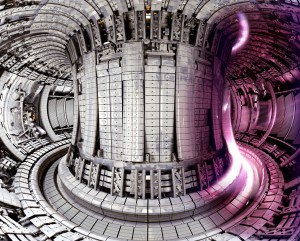
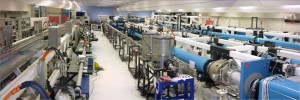
Objectives of the Plasma Physics Division
- to unite European scientists interested in the physics of fully and partially ionized gases
- to promote research and teaching in plasma physics and its applications, to facilitate research collaboration and to represent European physicists outside Europe
- to coordinate activities with the other physical societies, such as the American Physical Society and the Physical Society of Japan
- to collaborate on the Editorial Board of Plasma Physics and Controlled Fusion.
The Plasma Physics Division is responsible for the annual EPS Conference on Plasma Physics and for granting several Awards.
Useful links

